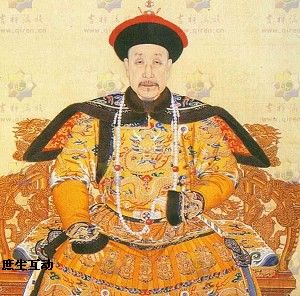Qianlong (1711-1799), the sixth emperor of the Qing Dynasty (1644-1911), is remembered today not only as the ruler presiding over the country’s flourishing economy during his six-decade reign (1736-1795), but also as a keen collector of works of art. Artistic creation under his patronage reached new heights of excellence. Masterpieces from the Qianlong reign, including items from the emperor’s personal collection, are prominent among the priceless treasures, passed down over dynasties, now housed in the Beijing and Taipei Palace Museums. Works from that time often appear at auctions around the globe.

An accomplished painter, calligrapher and poet, Emperor Qianlong was also a book lover. Eminent expert on Chinese history Frederic Wakeman Jr. once remarked that Qianlong’s literary and scholarly temperament was manifest in his passion for books and art. The emperor wrote hundreds of poems praising the works of contemporary poets, and his art collection comprised thousands of paintings. Calligraphers of that time would work only with top quality silk and inks, but Qianlong went further by carving works of calligraphy on jade tablets and adorning them with gold thread.
Qianlong’s reign witnessed more than 100 compilation projects on such subjects as history, institutional improvement, medical science and literature. Notable among them is The Complete Library of the Four Branches of Literature, comprising 3,460 titles of ancient books totaling 79,000-plus volumes, which took 14 years to finish.
Emperor Qianlong was also open to art from other countries. Giuseppe Castiglione, for example, was a Jesuit painter invited to the imperial court to portray the emperor going about his daily duties and enjoying pastimes such as hunting. These works celebrate Chinese painting skills and are also imbued with Western sensibilities. Giuseppe Castiglione was later commissioned to design the Western-style palaces in the imperial gardens of the Old Summer Palace.
In recent years art works from Qianlong’s reign have fetched record prices at auction. An exquisite 18th-century Kesi (woven silk) scroll, looted more than a century ago from Beijing’s Palace Museum, sold for RMB 35.75 million (US $4.3 million) at the 2004 China Guardian spring auction. The 17.145-meter-long, 31.6-centimeter-wide Kesi, woven at the behest of Emperor Qianlong, consists of three parts, the first of which features Qianlong’s imperial edicts and poems. The scroll also includes almost all known calligraphic renderings of the poem Lanting Xu (Preface to the Orchid Pavilion Collection) by renowned fourth-century calligrapher and poet Wang Xizhi (321-379).
Ceramics incorporating diverse modeling and carving techniques also reached their zenith during Qianlong’s reign. A colored octagonal porcelain vase whose design portrays the Eight Immortals crossing the sea was one of the items at the 2006 Guardian spring auction. It is embellished with protruding decorative seams that delineate six sections crosswise and gold painted lines that frame eight lengthwise sections. It hence comprises 48 finely painted patterns and images. Arsenic added to the glaze toned down the bright intensity of the design, giving the vase a characteristically mellow famille rose shade. The technique first appeared during Qing Dynasty Emperor Kangxi’s reign (1661-1722), and reached its peak during the reigns of Emperor Yongzheng (1722-1735) and Emperor Qianlong (1736-1796).
The vase went under the hammer for RMB 52.8 million – a new record for China’s mainland porcelain market. A few years later in November 2010, a carved porcelain vase from Qianlong’s reign sold at a British auction for 51.6 million pounds sterling, creating yet another record for Chinese art works.
